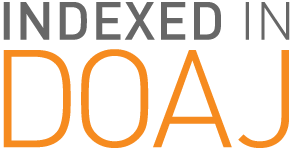Styleguide
Please refer to this style guide if you wish to submit a contribution in English. For German language contributions, please see the Guidelines on the website’s German language version to which you can switch using the button on top right.
Submission & Metadata
- Please submit the article as docx or rtf. Make use of formatting styles to mark the title, heading 1, heading 2. Please use a period to separate title and subtitle. The text should be structured with subheadings (up to two levels). Please do not number the subheadings.
- Please note the maximum contribution length including the bibliography of 50,000 characters (including spaces).
- In the section querelles-net: Reviews the length of the article is 8000 – 12,000 characters (including spaces). If the structure of your review requires a longer examination of the work(s), this is not a problem. We reserve the right to make suggestions for shortening.
- During the submission process, you’ll be asked to provide a title, abstract (max. 1.000 characters including spaces) and up to five keywords both in German and English. Please consider using keywords from the Schlagwortindex GenderOpen.
- Entries for the authors’ index (max. 700 characters) should be formulated in complete sentences and contain no references to publications. The bio statement can be provided via your profile ("Public").
Punctuation & Miscellaneous
- Use the hyphen-minus (-) with no spaces to join words, for example: good-looking.
- Use the en dash (–) with no spaces for numbers, for example: 2007–2009.
- Use the en dash (–) with a blank space on both sides of the dash for parenthesis.
- For quotations inside a quotation use single quotation marks. Omissions and additions in quotations are to be marked by square brackets […]. Omissions at the start and end of quotations do not need to be marked.
- Punctuation that is part of a quote goes inside the quotation marks, otherwise add the it after the reference that follows the quote.
- Double quotation marks (for quotes) may also be used to indicate a distanced use of terminology, improper or tempered use of words, but please consider avoiding those if possible.
- Use italics for emphasis.
- Lists can be indicted by bullet points or hyphens.
- Footnotes serve to give content-related explanations, including brief references to further literature. Footnotes always end with a dot. In text, the footnote number generally goes after a period or comma.
- When listing three or more facts, items, persons etc., please use the Oxford (or serial) comma. For example: She travelled to La Paz, Nairobi, Jakarta, and Moscow.
- We generally recommend a formal writing style. For example, contractions like „can’t“ or „would’ve“ should be avoided in favour of the long form („cannot“, „would have“). However, in cases that require a more informal spelling, these are also accepted.
Abbreviations & Acronyms
- Please avoid using abbreviations in the text if possible. Abbreviations may be used in tables, graphs, footnotes, notes and bibliographies, as well as in brackets and for regular occurrences. For all abbreviations such as “e.g.”, “N.B.”, “i.e.”, spaces should not be used.
- When first mentioned, commonly used acronyms are to be spelled out completely followed by the abbreviation in brackets; for example: International Monetary Fund (IMF).
- Please spell out abbreviations for places; for example: Frankfurt am Main.
Names, Terminology & Numbers
- For narrative citations, write out an authors’ full name when mentioning them for the first time, and afterwards use only their surname. For parenthetical citations, do not use full names.
- Proper names should not be highlighted (for example, in italics, quotation marks) unless they are not otherwise recognizable.
- For book titles, articles or journals mentioned, use standard font and double quotation marks.
- For terms in other languages use italics, if applicable written with the spelling of the source language, for example: Weltgeist. Expressions in other languages can also be added in brackets, for example: legal literacy (Rechtskundigkeit).
- In the case of decades, write, for example, 1990s.
- The date of publication of daily newspapers is to be fully written out, when applicable with naught for the day, month, and year; for example: Der Tagesspiegel, 29.08.2000.
- If a date is mentioned in the text, it is to be written out; for example: The post must be filled by 5 May 2016.
Illustrations & Tables
- Number graphs, tables and illustrations each separately from start to end. Each graph/table/illustration should have a heading (Ill. 1: Two Consulting Models/Table 1: Title), a caption with indication of source (Source: Landesmuseum Trier) and some copyright/license information.
- Illustrations/Photos: Images with a color value going from light to dark should have a resolution of 100 pixels pro centimeter, or 300 dpi (dots per inch). Photos that are integrated into the document with an 8 cm width should have a resolution of 800 pixels. Please use files in the jpg format.
Citation & References
- Citavi users: Look for the citation style “Opengender”.
- Zotero users: Look for citation style Open Gender Journal.
- Direct and indirect quotes should be indicated as follows: (Meier 2010, 5). With several authors, the names are to be separated by a forward slash (Meier/Weber 1978). With four or more authors, please use et al. after the first name (Meier et al. 1988). Several sources are to be separated by semicolon (Weber 1977; Meier 1998).
- In the section querelles-net: Reviews, the short form (p. X) is permitted as a method of citation
- When referring to several pages, please write, for example, 304pp., without any blank spaces. Should several page numbers be given, these are to be separated by commas (Weber 1977, 304, 456pp.). For works without page numbers, please use, for example, paragraph numbers (paragraph 4) or a time marker (01:05:19).
- All cited literature must be referenced in the references section according to our style guide. References are to be sorted alphabetically. Works of the same author are to be ordered chronologically, starting with the most recent work. Please give the full reference with every work cited.
- For works with several authors, list all the names (surname[s], first name[s]) in full and separate them with a forward slash (without a blank space).
- Both Editor and Editors are abbreviated as (Ed.).
- The main title and subtitle are to be separated by a period. Don’t use italics or quotation marks for the title.
- Please indicate the exact edition cited. The first edition remains unmarked.
- List all publishing places when applicable, separated by commas, e.g.: Frankfurt am Main, Bern, New York: Peter Lang Verlag.
- Always include the persistent identifier (e.g. DOI, URN) if one exists. Use Crossref simpleTextQuery to search for DOIs.
Please format references as follows:
| Journal Articles | Surname, Name (Year): Title. Subtitle. In: Journal Title Issue (Volume), xx–xx. doi: 10.25595/571 |
| Monographs | Surname, Name/Surname, Name (Year): Title. Subtitle. 3rd Edition. Place of publication: Publisher. doi: 10.25595/571 |
| Edited Volumes/Anthologies | Surname, Name (Ed.) (Year): Title. Subtitle. [when applicable: Edition] Place of publication: Publisher. doi: 10.25595/571 |
| Reprints | Surname, Name (Year of first edition): Title. Subtitle. Ed. [when applicable] with postscript by Name Surname (Year). Place of publication: Publisher. doi: 10.25595/571 |
| Essays in Edited Volumes/Anthologies | Surname, Name (Year): Title. Subtitle. In: Surname, Name [when applicable] (Ed.): Title. Subtitle. Place of publication: Publisher, xx–xx. doi: 10.25595/571 |
| Lexicon Articles | Surname, Name (Year): Keyword: Title of the Keyword. In: Surname, Name (Ed.): Title of the Lexicon. Subtitle. Place of publication: Publisher, xx–xx. doi: 10.25595/571 |
| Websites | [when applicable] Surname, Name OR Institution (Year): Title. URL (Date last accessed). |












